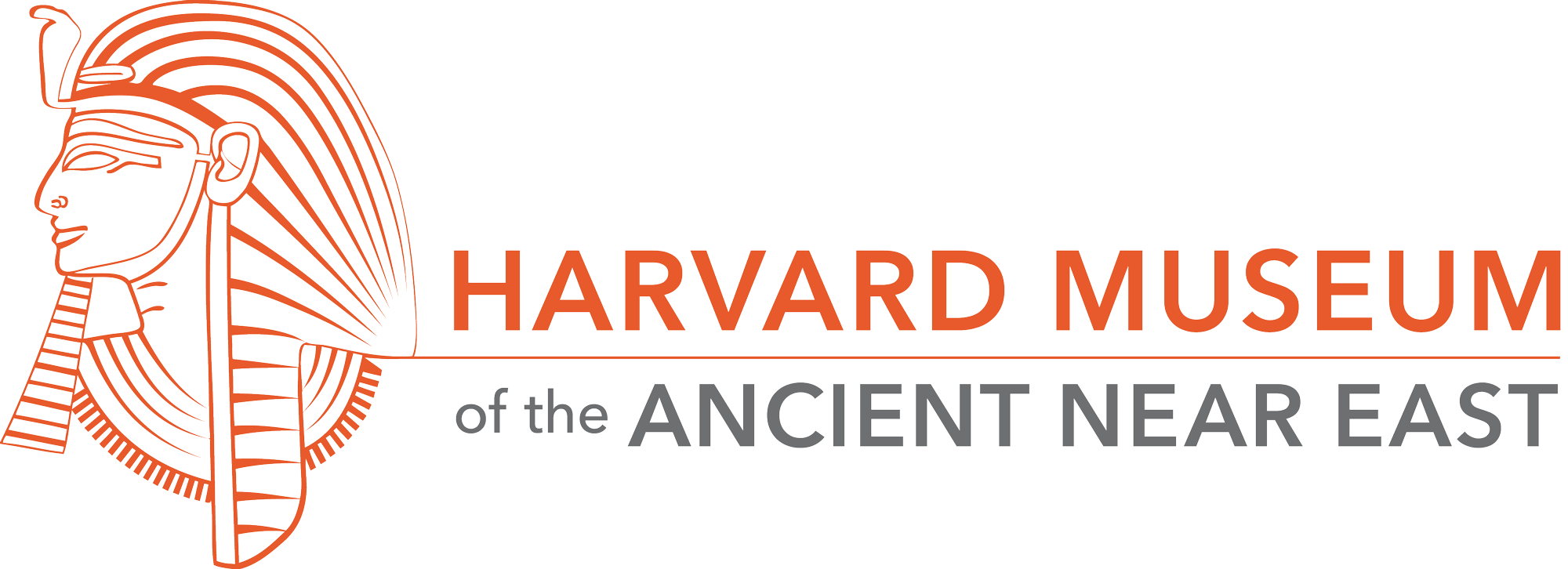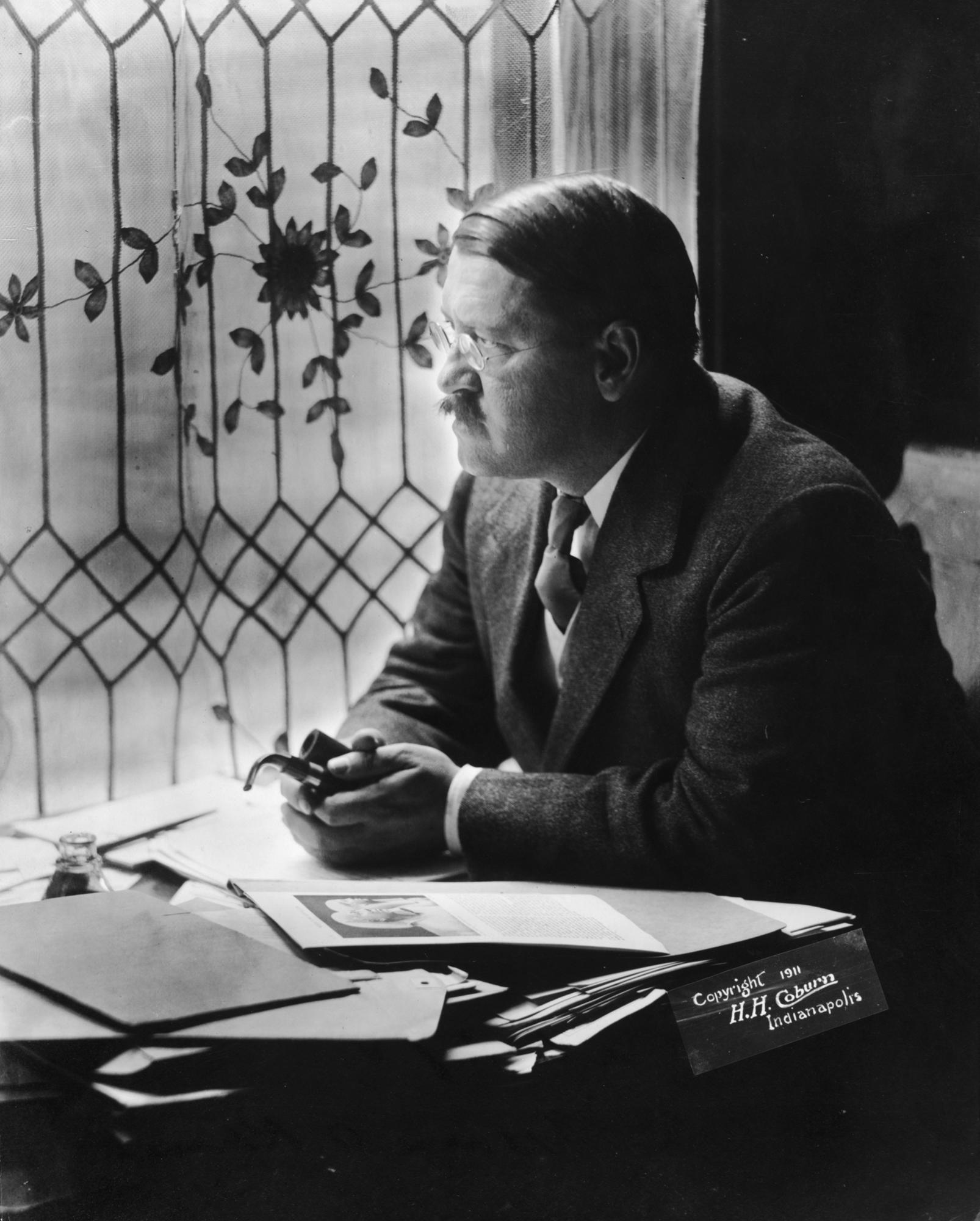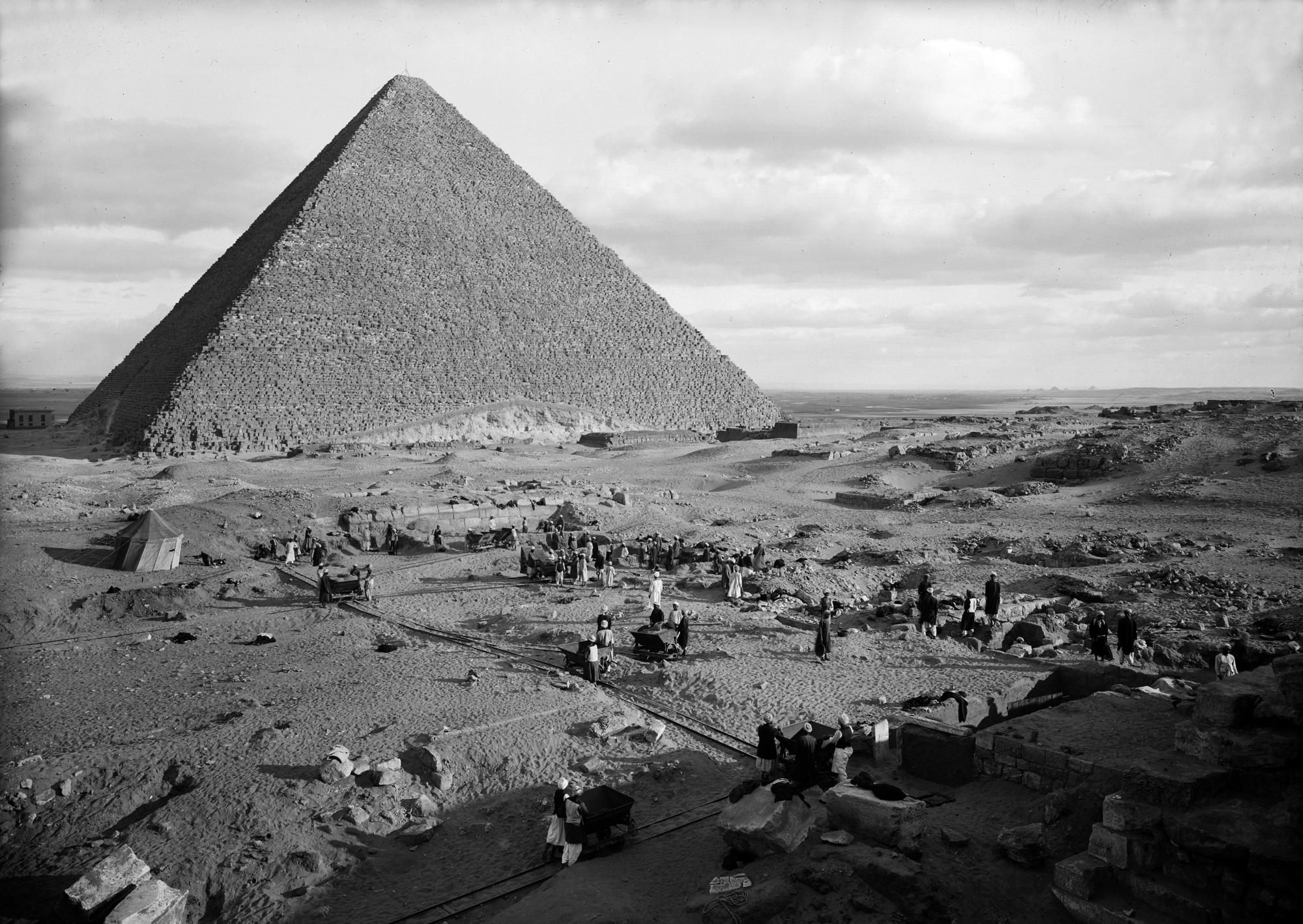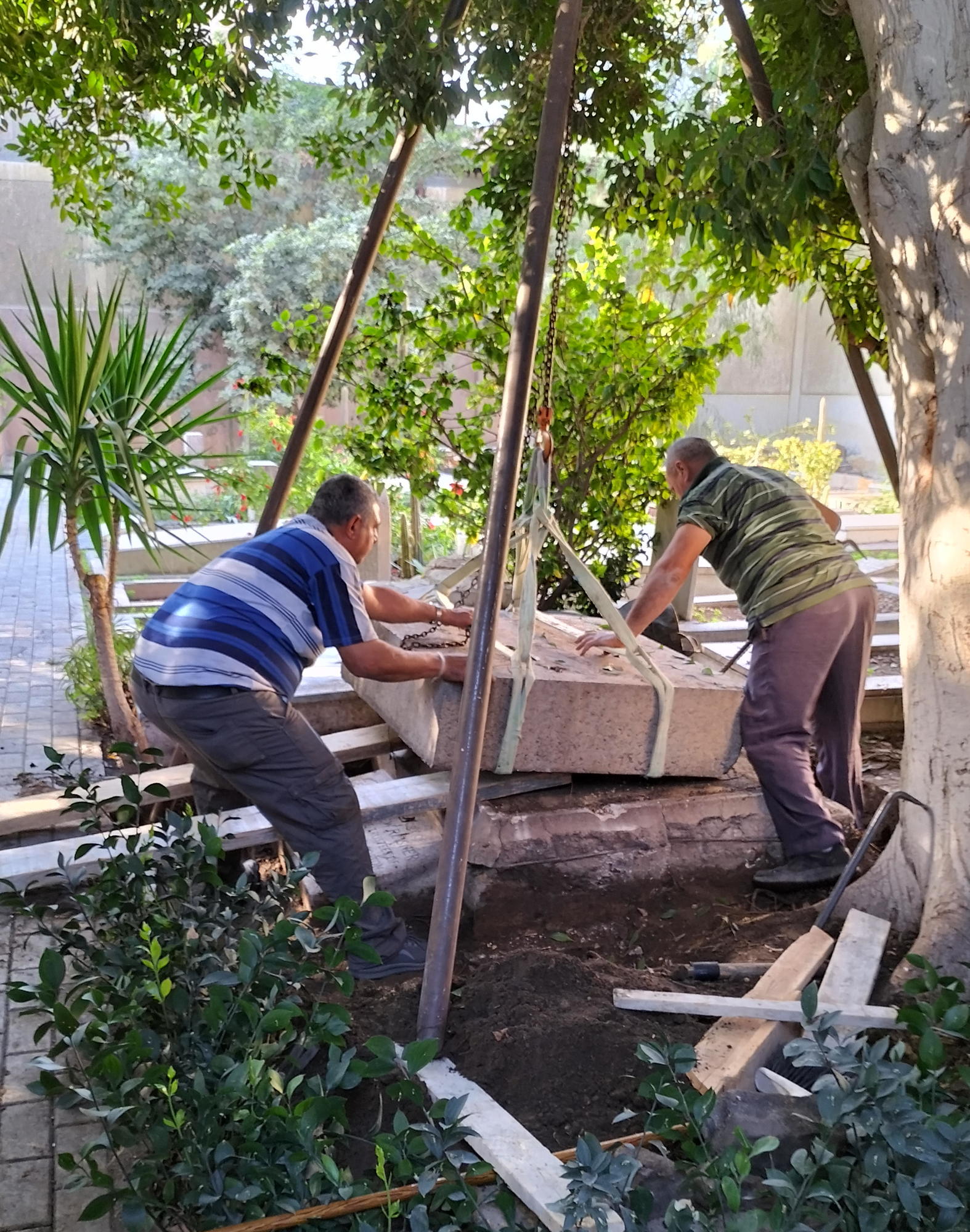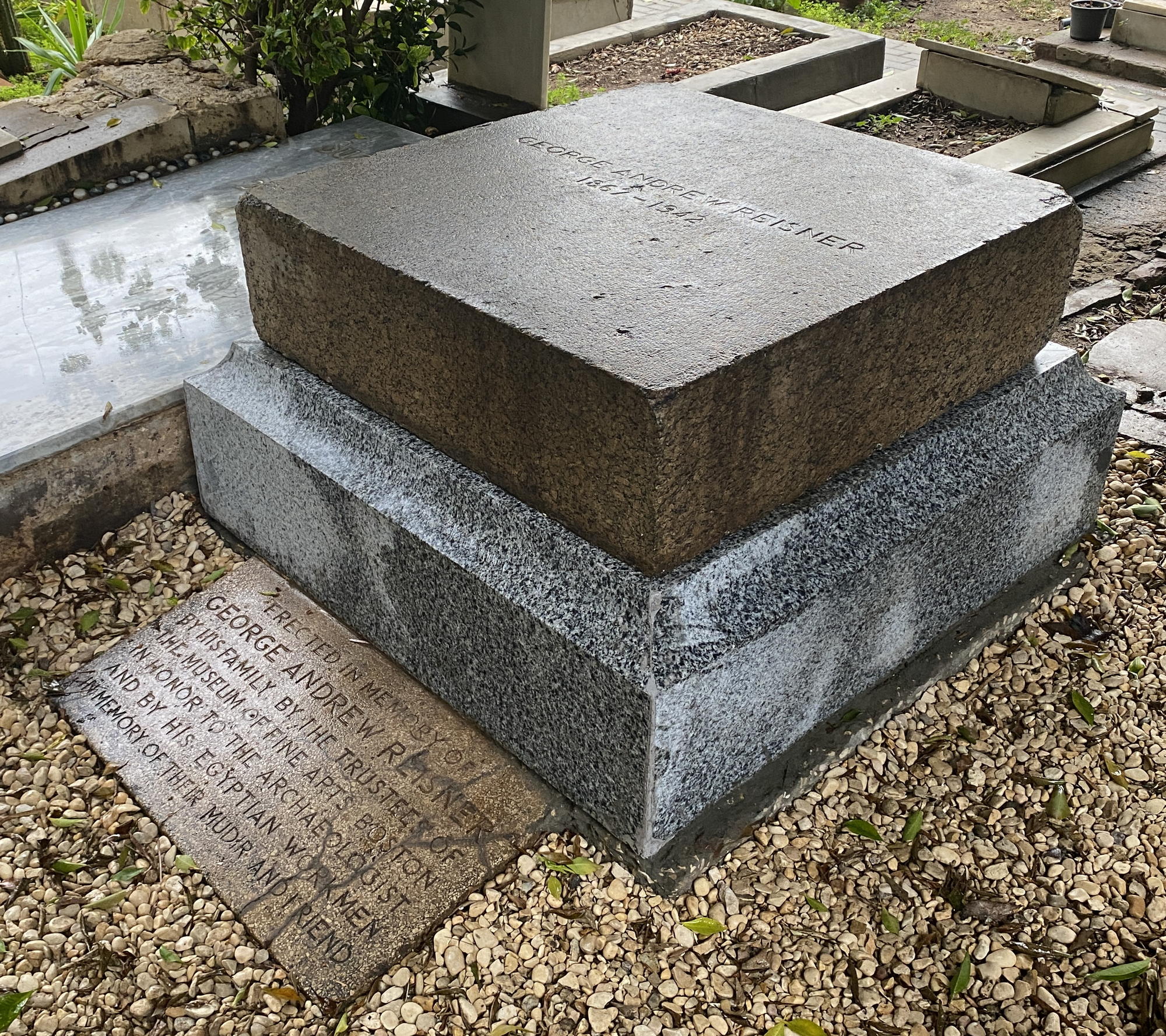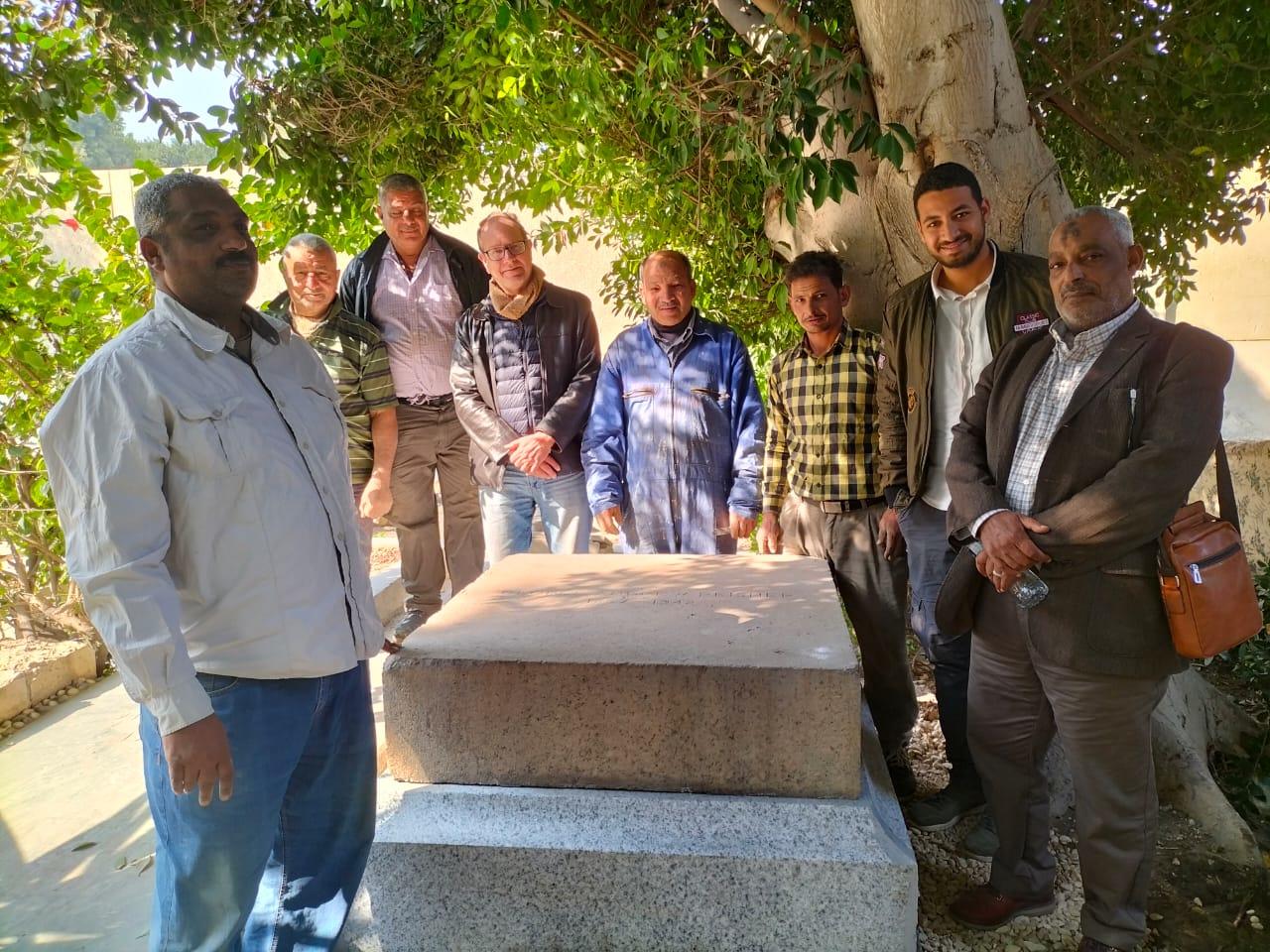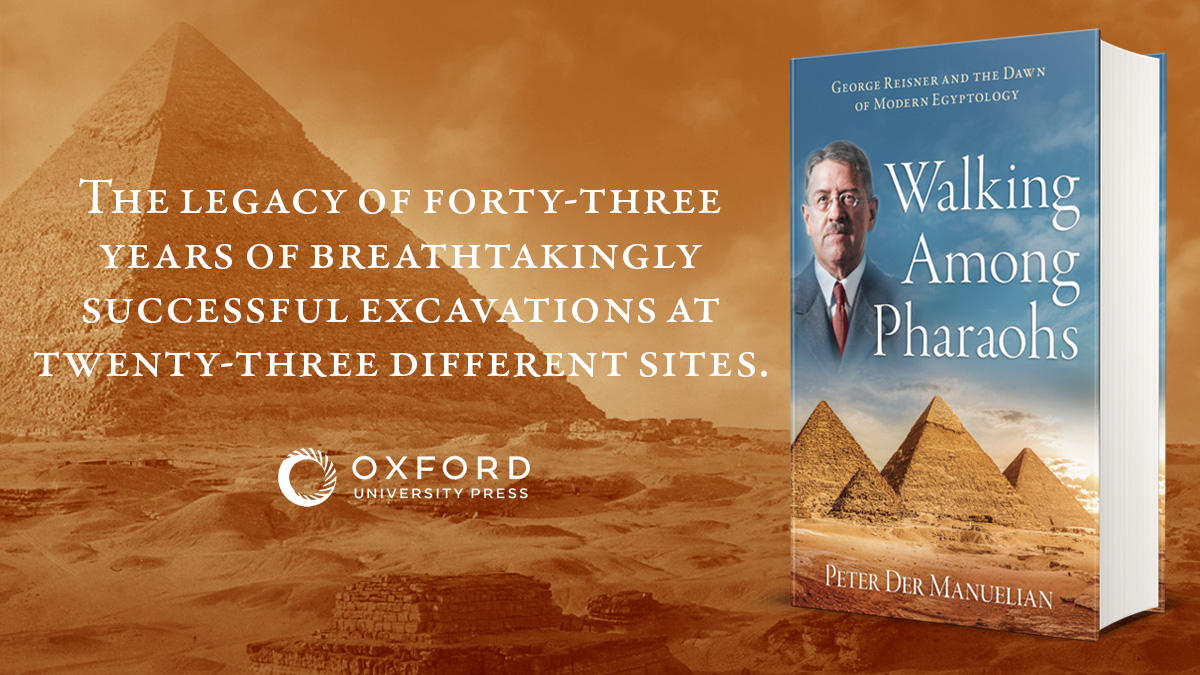George Reisner and Archaeology
One of Harvard’s first and most accomplished archaeologists, George Reisner 1889, PhD 1893, came to Harvard from his native Indianapolis. After a three-year postdoc in Berlin, then a teaching year back at Harvard, he received an offer to publish parts of the collection in the Egyptian Museum in Cairo. Reisner and his wife Mary set off, ostensibly for a single year—that stretched into forty more.
George Reisner in Indianapolis, July–August 1911. Courtesy Harvard University Archives.
It was in Egypt that Reisner’s career took its turn towards archaeology. After a few seasons digging for American philanthropist Phoebe Apperson Hearst (for the University of California, Berkeley), he established the Harvard University–Boston Museum of Fine Arts Expedition. This dig ran almost uninterrupted from 1905 to 1947.
Cemetery G 2000 at Giza, looking southeast to the Khufu pyramid, 1905. HU–MFA B772 NS; photo by Albert Lythgoe. Courtesy Museum of Fine Arts, Boston.
Reisner revolutionized archaeological method with deductive reasoning and careful documentation. His teams kept “dig diaries” and object register books, took 45,000 glass-plate photo negatives, and produced thousands of archaeological drawings. In 1903, he jumped at the chance to excavate the cemeteries surrounding the famous Giza Pyramids, just west of Cairo. He eventually cleared two-thirds of the site, including in 1925–27 the mysterious tomb of Queen Hetep-heres (mother of King Khufu), 90 feet underground.

The HU–MFA Expedition staff pose with Reisner and MFA director Harold Edgell at Harvard Camp, looking east, February 24, 1938. HU–MFA A7924PA NS; photo by Mohammedani Ibrahim. Courtesy Museum of Fine Arts, Boston.
Egypt wasn’t the only ancient culture whose secrets Reisner helped unlock. He also explored sites in the Sudan, including the powerful Nubian kingdom of Kerma, and then the temples and pyramids by the holy mountain of Gebel Barkal, where he was the first to discover the hidden entrances to Nubian royal pyramid complexes. Additional royal Nubian cemeteries followed (Nuri, el-Kurru, Meroe), then he explored several complex ancient fortresses built on the Nile to guard Egypt’s southern border.
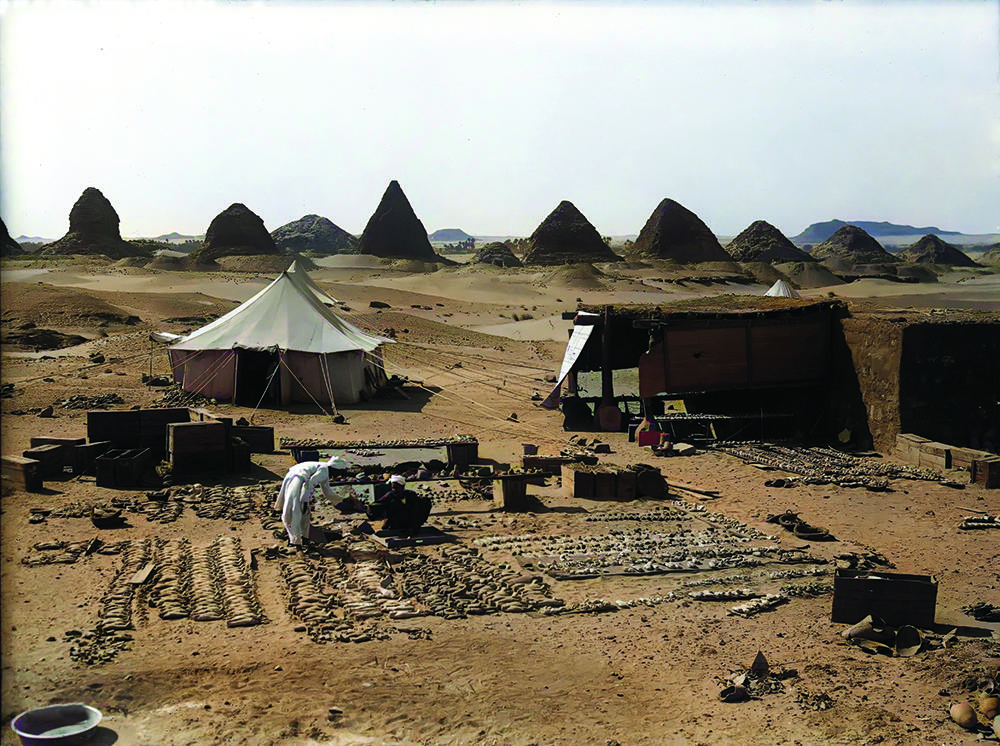
Colorized with artificial intelligence: HU–MFA Expedition staff (not identified) arrange shawabti figurines at the Nuri, Sudan, dig camp, March 19, 1917. HU–MFA D335 NS; photo by George Reisner. Courtesy Museum of Fine Arts, Boston.
The 50–50 division of finds in those days resulted in crates of antiquities bound for the Cairo Museum, for Khartoum, the Museum of Arts, Boston (MFA), and for Harvard’s Peabody Museum. Reisner became professor of Egyptology at Harvard and curator of the MFA’s Egyptian Department. But he rarely returned to Boston, even excavating right through World War I when all the other foreign missions shut down. The only blemish on this remarkable career was Reisner’s at times colonialist attitude. During World War II, refusing to leave his beloved Harvard Camp behind the Pyramids, despite the threat of a German invasion from the west, Reisner spent his final years at Giza. He died there at the age of 74 on June 6, 1942.
Reisner’s Tombstone in 2022
The monument marking Reisner’s burial in the American cemetery in Old Cairo is made of a single block of granite (donated from the Kasr el-Nil bridge renovation project) inscribed with his name. It measures about 106 x 106 x 40cm thick, set above a solid concrete base. This base was surrounded by a secondary frame of profiled terrazzo that was cast in situ and reinforced with 10mm steel rods. Part of this frame extended forward on the east side to create a sloping surface (91 x 40cm) upon which a longer dedicatory inscription appeared. The text reads:
Erected in Memory of
GEORGE ANDREW REISNER
by his Family, by the Trustees of
the Museum of Fine Arts, Boston
in honor to the Archaeologist
and by his Egyptian workmen
in memory of their “Mudir” and Friend
Since its installation, the groundwater level surrounding the monument had risen slightly, and a ficus tree was planted close to it. The tree’s roots surrounded the monument on its east and north sides. The surrounding terrazzo frame at the base of the monument was damaged due to water penetration; this caused its reinforcement to rust and expand, fragmenting the terrazzo. The granite block above the frame also showed erosion on its northwest corner due to exposure to water. The extension, which also had steel bars connected to the frame, was showing signs of cracking.
In 2011, a small group of Americans residing in Egypt created the informal committee “Friends of the American Cemetery.” Their goal was to promote maintenance of the cemetery and restoration of its monuments. They decided that the base of the monument required replacement. The group arranged with Dr. Nicholas Warner of the American Research Center in Egypt (ARCE) for the necessary materials, labor, and equipment to carry out this task. Dr. Warner and his contractor, Mr. Mahmoud Mohamed al-Tayyeb, assessed the condition of the site and the requirements of the project on November 14, 2022. Next, they prepared a new frame of grey granite, in four pieces, that matched the design of the original terrazzo frame. The installation took place at the cemetery on December 21 and 22, with final completion on December 24.
The Restoration Process
